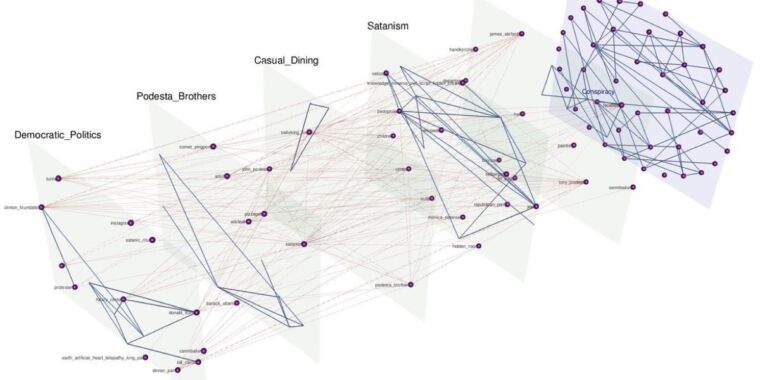Mark Twain is often credited with the saying, “A lie can travel halfway around the world while the truth is still putting on its shoes.” Twain never actually said it; it appears to be a mutated version of something essayist Jonathan Swift once wrote—a misattribution that aptly illustrates the point. The same is true of a good conspiracy theory, composed of unrelated facts and false information that somehow get connected into a loose narrative framework, which then spreads rapidly as perceived "truth." According to a June paper published in PLOS ONE, the structure of folklore can yield insights into precisely how these connections get made and, hence, into the origins of conspiracy theories.
A very interesting read (see link below) and I thought I would share this today as I heard an amazing statement from a person I saw hurling verbal abuse at someone on a social network who was standing up to them (not sure if it was a he or she as it was all pseudonyms) and stating they must accept the abuse and personal insults as "words don't hurt anyone". I don't even want to repeat the words here as I'll be banned from any decent network. I responded though to say that words most definitely do hurt and cause harm not just to the individual's dignity, but riots and insurrections have been caused and many people have also committed suicide after being goaded on to do so (this was also being done).
We should try and respect others as we would like them to treat us on social media, and realise that conspiracy theories as well also cause real violence as shown in the Pizzagate study. We can blame Big Tech for many things except our own bad human behaviour, and the silent majority do need to speak up sometimes and support those being discriminated against or abused.
See
Study: Folklore structure reveals how conspiracy theories emerge, fall apart#
technology #
socialmedia #
myths #
conspiracytheories
Rumors swirling around 2016 Wikileaks dump was glue that held "Pizzagate" together.